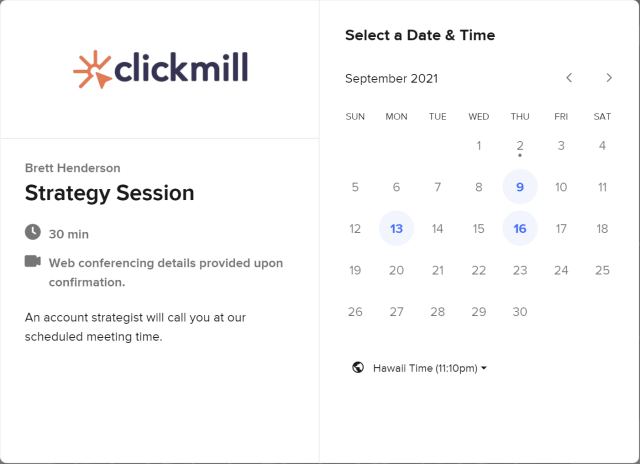A sermon is a message given to a congregation to teach, inspire, and encourage spiritual growth. Writing a sermon is key to effectively sharing God’s word. Start by understanding your audience and choosing a relevant topic. Study the passage thoroughly, then create a clear outline. Prepare both spiritually and mentally, and craft a memorable “sticky statement” to make your message stick. Adding illustrations can help bring your points to life. Practice your delivery, and take a day of rest beforehand to ensure you’re fully prepared.
Are you trying to discover how to write a sermon that helps your audience to grow in their relationship with God?
Delivering a powerful and impactful sermon can be a life-changing experience for both you and your congregation.
However, writing a sermon that resonates with your audience and stays true to the biblical text can be a daunting task.
In this guide, we will explore the steps you need to take to write a sermon that engages your audience and helps them grow in their faith.
While there is no one-size-fits-all approach to writing a sermon, certain principles and techniques can help make the process more manageable.
What is a sermon?
A sermon is a message delivered to the congregation as part of a church service. The primary purpose of a sermon is to convey a message from the Bible and provide guidance, inspiration, and support to the congregation.

As pastors, we have a responsibility to craft sermons that effectively communicate the message of the Bible and are relevant to the lives of our congregation.
Christian sermons often focus on a specific theme or passage from the Bible and are designed to provide a deeper understanding of the text and its relevance to our audience.
While the exact format and content of a Christian sermon can vary depending on the denomination and the pastor’s personal style, most Christian sermons follow a similar structure.
Introduction: They typically begin with an introduction that sets the stage for the message and engages the audience’s attention.
Historical Context: This may be followed by a section that provides background information on the text and its historical context.
Body: The main body of the sermon typically includes several points or ideas that support the central message or theme. These points may be supported by scripture, personal anecdotes, ancient Jewish or early Christian beliefs about passages, or other examples.
It’s important to craft sermons that not only convey the message of the Bible but also provide practical guidance and support to our Christian congregation.
Conclusion: The conclusion of the Christian sermon should summarize the key points and provide a call to action or application for the audience.
This may involve challenging the Christian congregation to take action based on the message or encouraging them to reflect on the message and apply it to their Christian lives.
A Christian sermon is a critical part of a Christian church service, providing guidance, support, and inspiration to the Christian congregation.
By effectively communicating the message of the Bible in a way that is relevant and engaging, we can help our Christian audience deepen their Christian faith and grow in their Christian relationship with God.

Get A Proven Marketing Plan That Increases Enrollments When You Book A Call Today!
Receive customized advice to help your school attract more families!
Why Is Writing A Sermon Important?
Writing a sermon is an essential aspect of a pastor’s ministry, as it provides an opportunity to share the transformative power of the Word of God with their congregation.

As 2 Timothy 3:16-17 states,
“All Scripture is God-breathed and is useful for teaching, rebuking, correcting and training in righteousness, so that the servant of God may be thoroughly equipped for every good work.”
By incorporating Scripture into your sermon, you can teach, rebuke, correct, and train your congregation, and help them to grow in their relationship with God.
Hebrews 4:12 reminds us of the power of the Word of God, stating that it is “alive and active” and able to penetrate deep into the hearts and minds of those who hear it.
By crafting a well-written sermon that effectively uses Scripture, pastors can help to transform the lives of their congregation and inspire them to grow in their faith.
1 Thessalonians 2:13 emphasizes that the Word of God is not just another human idea or opinion, but is actually the Word of God at work in us.
By incorporating Scripture into their sermons, pastors can help their congregation to see the relevance and importance of God’s Word in their daily lives, and inspire them to apply it to their own experiences and struggles.
Writing a compelling sermon that effectively uses Scripture is crucial to helping individuals grow in their relationship with God.
By incorporating the Word of God into their sermons, pastors can teach, rebuke, correct, and train their congregation, and help to transform their lives into the image of Christ.
How To Write A Sermon STEP 1: Understanding Your Audience
The best sermons are the ones that most directly address the deeply felt needs of your audience. This means understanding everything you can about your audience is important to identifying needs and problems they have in their lives.

By taking the time to learn about the demographics, interests, and needs of your audience, you can tailor your sermon to address the specific issues that are most relevant to them.
This not only makes the sermon more engaging and relevant, but it also helps the audience to connect with the message on a personal level.
One way to understand your audience is to conduct surveys or focus groups to gather information about their needs and interests.
You can also observe their behavior and interactions within the church community to gain insights into their priorities and concerns.
Another way to understand your audience is to consider the cultural and social context in which they live.
For example, if your audience is composed mostly of young adults, you may want to address issues such as career development, and relationships.
On the other hand, if your audience is composed mostly of retirees, you may want to address issues such as aging, health, and relationships with family and friends.
It’s also essential to consider the spiritual needs of your audience. What are their questions, doubts, and concerns about their faith?
What are their hopes and aspirations for their spiritual journey? Addressing these questions in your sermon can help your audience to deepen their faith and find meaning and purpose in their lives.
By understanding your audience and their needs, you can craft a sermon that speaks directly to their hearts and minds.

Get A Proven Marketing Plan That Increases Enrollments When You Book A Call Today!
Receive customized advice to help your school attract more families!
How To Write A Sermon STEP 2: Selecting The Sermon Topic
Choosing the right sermon topic is crucial to ensuring your sermon resonates with your audience. The best sermons are those that meet the audience’s needs while remaining in alignment with the church’s vision, mission, and values.

One way to identify the needs of your audience is to gather information about their demographics, interests, and concerns.
This information can help you to understand what topics are most relevant to them and what issues they are struggling with in their daily lives.
Once you have identified these needs, you can choose a sermon topic that addresses those needs and provides practical guidance and support.
However, it’s also important to ensure that your sermon topic aligns with the church’s vision, mission, and values.
This means considering the broader goals and objectives of the church and how your sermon fits into that broader context.
To choose the right sermon topic, pastors and speakers can use a variety of resources and tools. Here is an article you can use for some inspiration titled, 104 Lifechanging Sermon Topic Ideas, which provides a wealth of ideas and inspiration for sermon topics that align with the church’s vision, mission, and values.
This resource can help pastors and speakers to find topics that are relevant, engaging, and meaningful to their audience while also remaining in alignment with the broader goals of the church.
Fox example: If you church is focused on world missions, focus you sermons around topics that will prepare you audience for missions, and not so much time focusing on the importance of street ministry or homeless ministry. While these are important ministries, your church is called to do missions, and you should keep your messages in line with God’s call on your ministry.
Ultimately, choosing the right sermon topic is essential to creating a sermon that resonates with your audience and helps them to grow in their faith.
By considering the needs of your audience and the broader goals of the church, you can choose a topic that is both practical and impactful, providing guidance and support to all those who seek it.

Get A Proven Marketing Plan That Increases Enrollments When You Book A Call Today!
Receive customized advice to help your school attract more families!
How To Write A Sermon STEP 3: Study The Passage
Studying a biblical passage is a critical step in how to write a sermon that accurately conveys the meaning and significance of the text. To gain a deeper understanding of the text’s original meaning, pastors and speakers should follow a rigorous and structured process that involves using various resources and tools.

- The following is an exact process for studying a biblical passage to understand its original meaning:
- Begin by reading the passage several times. This helps the preacher to get a general sense of the text and its key themes.
- Use a study Bible to read the passage in context. This can help the preacher to understand the historical and cultural background of the text and how it fits into the broader biblical narrative.
- Consult commentaries and Bible dictionaries to gain a deeper understanding of the text’s meaning. These resources can provide insights into the original language, cultural context, and theological significance of the text.
- Use a concordance to study the individual words used in the passage. This can help the preacher to understand the original language and nuances of the text.
- Study the historical context of the passage, including the political and social conditions of the time. This can help the preacher to understand the meaning of the text in its original historical context.
- Consider the literary genre of the passage. Is it a narrative, a poem, or a letter? Understanding the genre can help the preacher to interpret the text more accurately.
- Look for repeated words or themes in the passage. This can help the preacher to identify the main point or message of the text.
- Study the parallel passages in other books of the Bible. This can provide additional insights into the meaning and significance of the text.
- Consult scholarly resources, such as academic journals or theological books, to gain a deeper understanding of the text.
By following this process, pastors and speakers can gain a comprehensive understanding of the original meaning and significance of the biblical passage. This will help them to write a sermon that accurately conveys the message of the text and engages their audience in a meaningful way.
How To Write A Sermon STEP 4: Writing A Sermon Outline
Crafting a comprehensive sermon outline is an essential step in writing a compelling sermon. This is one of them most important steps people skip when learning how to write a sermon.

The sermon outline serves as a roadmap for the preacher, guiding them through the key points they want to make and the scriptures they want to use.
By creating an outline, the preacher can organize their thoughts, focus their message, and ensure that they stay on track.
When writing a sermon outline, there are several steps to follow. These steps include:
- Begin by identifying the main point or theme of the sermon. This will be the central idea that the preacher wants to communicate to the congregation.
- Once the main point has been identified, break it down into several sub-points or supporting ideas. These sub-points will help the preacher build a logical and coherent argument.
- Use H1, H2, H3, and H4 headings to organize the sermon outline. This makes it easier for the preacher to see the structure of the sermon and ensures that the sermon is easy to follow for the congregation.
- Use scripture to support each point in the sermon outline. This helps the preacher to stay focused on the biblical text and ensures that the message is rooted in the Word of God.
- Include personal stories, anecdotes, or illustrations to help illustrate each point in the sermon outline. This can help the congregation to connect with the message on a personal level and apply it to their own lives.
- Make sure that the sermon outline flows logically and coherently. Each point should build on the previous one, and the sermon should have a clear beginning, middle, and end.
- Be concise and to the point. Avoid using overly complicated language or theological jargon, and make sure that each point is clear and easy to understand.
- Review and revise the sermon outline as needed. This will help to ensure that the message is clear, concise, and impactful.
By following these steps, you can craft a comprehensive sermon outline that helps them to deliver a powerful and impactful message to their congregation.

Get A Proven Marketing Plan That Increases Enrollments When You Book A Call Today!
Receive customized advice to help your school attract more families!
How To Write A Sermon STEP 5: Preparing Spiritually & Mentally
When learning how to write a sermon, it’s important to recognize that writing a sermon requires not only mental preparation but also spiritual preparation.
Preparing yourself spiritually and mentally can help you stay focused and centered on the message you are about to share with your congregation.

To prepare yourself spiritually, take time to spend in prayer, and reflection. This will allow you to connect with God and seek guidance for the message you are about to deliver. Ask God to give you clarity and wisdom as you craft your sermon, and to open your heart to His message.
Mental preparation is equally important. It can be helpful to set aside dedicated time to work on your sermon, free from distractions or interruptions. This can help you focus on the task at hand and avoid procrastination.
Additionally, consider engaging in activities that help you maintain a healthy lifestyle and reduce stress. (**There is no good way to give a sermon if you’re suffering from pastor burnout.)
This may include exercise, spending time in nature, or engaging in hobbies or interests that bring you joy.
By taking care of your mental and emotional well-being, you can approach your sermon writing with a clear and focused mind.
Ultimately, preparing yourself both spiritually and mentally will help you craft a sermon that truly speaks to the hearts and minds of your congregation.
By staying connected to God and maintaining a positive mindset, you can share His message in a powerful and impactful way.
How To Write A Sermon STEP 6: Crafting Sticky Statement
To understand how to write a sermon that really sticks in the mind of your audience, you will want to craft a sticky statement for your sermon.

A sticky statement is a brief, memorable phrase or sentence that encapsulates the central message or theme of your sermon.
It’s called “sticky” because it’s designed to stick in the minds of your audience and be easily remembered even after the sermon is over.
A sticky statement is essentially the core belief that your sermon is intended to instill into the hearts of your audience.
Crafting a sticky statement requires careful consideration of your audience, the message you want to convey, and the overall theme of your sermon.
To create a sticky statement, start by identifying the key takeaway or central message of your sermon. This may be a particular scripture passage, a theme or idea you want to convey, or a call to action for your audience.
Next, condense this message into a short and simple phrase or sentence.
Avoid using overly complicated or abstract language, and focus on a message that is clear and easily understood by your audience.
Use concrete language and vivid imagery to make your statement more memorable and impactful.
Once you have crafted your sticky statement, test it out on others to see if it resonates with them and is easily remembered.
Refine and revise as needed until you have a statement that truly encapsulates the heart of your message and sticks with your audience long after the sermon is over.
A well-crafted sticky statement can help you engage your audience and keep them focused on the message you are trying to convey.
By summarizing your key message in a memorable and concise way, you can help your audience connect with your sermon on a deeper level and apply the message to their lives.

Get A Proven Marketing Plan That Increases Enrollments When You Book A Call Today!
Receive customized advice to help your school attract more families!
How To Write A Sermon STEP 7: Add In Illustrations
When learning how to write a sermon, it’s important to understand the power of a good illustration. Using illustrations can make your sermon more engaging and memorable.

Use personal stories, examples from popular culture, or metaphors to illustrate your points.
Using illustrations is an effective way to bring your sermon to life and connect with your audience on a deeper level.
They can help to clarify complex ideas, create visual representations of abstract concepts, and make your message more relatable and engaging.
Personal Stories: One way to incorporate illustrations into your sermon is by sharing personal stories.
Personal stories are powerful because they come from your own experiences and can help to humanize your message.
By sharing a personal story that relates to the theme or message of your sermon, you can help your audience connect with you and the message in a more personal way.
Cultural Illustrations: Another effective way to use illustrations is by drawing examples from popular culture or current events.
This can help to make your message more relevant and relatable to your audience. For example, you might reference a popular TV show or movie to illustrate a point, or use a current event to highlight the importance of your message in today’s world.
Metaphors: Metaphors are also a powerful way to use illustrations in your sermon.
A metaphor is a figure of speech that compares two things in order to highlight their similarities. By using a metaphor to illustrate a point, you can create a memorable image in your audience’s mind and help them better understand the message you are trying to convey.
When using illustrations, it’s important to choose examples that are relevant to your audience and support the overall theme of your sermon.
Avoid using illustrations that are too complex or difficult to understand, as this can confuse your audience and distract from your message.
Using illustrations is a valuable tool for enhancing your sermon and engaging your audience.
By incorporating personal stories, examples from popular culture, or metaphors, you can create a message that is both memorable and impactful.
Tips For Delivering Your Sermon Clearly
It’s not enough to simply write a compelling sermon – you must also deliver it in a way that connects with your audience and effectively conveys your message.
This requires skillful use of your voice, eye contact, and body language.

Voice: One important tip for delivering your sermon with clarity is to use vocal variety.
This means varying the tone, pitch, and pace of your voice throughout your sermon to keep your audience engaged and interested.
Use pauses and emphasis to highlight important points, and avoid speaking in a monotone voice that can lull your audience to sleep.
Eye Contact: Eye contact is also important when delivering a sermon. Make sure to look at your audience and make eye contact with individuals throughout your message.
This can help to create a sense of connection with your audience and keep them focused on your message.
Body Language: Body language is another important aspect of delivering your sermon with clarity. Use gestures and movements to emphasize your points and create visual interest.
Stand up straight and use confident, open body language to project confidence and authority.
Finally, make sure to practice your sermon ahead of time to ensure you feel comfortable with the material and delivery.
This can help you to avoid stumbling over words or losing your train of thought during the actual sermon.
Overall, delivering your sermon with clarity requires careful attention to your voice, eye contact, and body language.
By using vocal variety, eye contact, and effective body language, you can engage your audience and effectively convey your message.

Get A Proven Marketing Plan That Increases Enrollments When You Book A Call Today!
Receive customized advice to help your school attract more families!
Take A Day Of Rest
It’s easy to get caught up in the demands of ministry and neglect your own self-care.
However, taking care of yourself is essential to avoid burnout and continue to deliver impactful sermons.

One way to prioritize self-care is by taking a day of rest before delivering your sermon.
Taking a day of rest allows you to recharge and approach the delivery of your message with renewed energy and focus.
Use this time to engage in activities that help you feel refreshed, such as spending time in nature, engaging in hobbies or interests, or spending time with loved ones.
It’s important to prioritize activities that help you disconnect from work and recharge your mind and body.
In addition to taking a day of rest, there are other self-care practices that can help you avoid burnout and maintain your mental and emotional well-being.
This may include setting boundaries around your work hours, engaging in regular exercise or prayer practices, and seeking support from colleagues, friends, or family members.
Recognizing the importance of self-care and making it a priority can help you to continue to deliver impactful sermons and serve your congregation effectively.
By taking care of yourself, you can avoid burnout, maintain your passion and energy for ministry, and ultimately deliver a message that truly speaks to the hearts and minds of your congregation.

Get A Proven Marketing Plan That Increases Enrollments When You Book A Call Today!
Receive customized advice to help your school attract more families!
Practice Delivering Your Sermon
Practicing the delivery of your sermon is an essential step in ensuring that your message is effectively communicated to your audience.
The way you deliver your sermon can greatly impact the way it is received and understood by your congregation.

Use A Mirror: One practical way to practice delivering your sermon is to use a mirror.
Stand in front of a mirror and deliver your sermon as if you were speaking to your congregation. This can help you to assess your body language, facial expressions, and overall delivery.
You can use the mirror to practice making eye contact with your imaginary congregation and to gauge your vocal variety.
Record Yourself: Another way to practice is to record yourself delivering your sermon.
The act of recording yourself will do two things. It will help you get confortable with the nervousness that comes with speaking in front of people who are watching you.
Speaking to a camera can also help you to identify areas where you need to improve and to make adjustments to your tone, pacing, and emphasis.
Watch the recording back and take note of any areas where you need to make changes or adjustments.
Practise on others: It’s also helpful to practice delivering your sermon in front of a small group of trusted friends or colleagues.
This can help you to receive feedback on your delivery and to get a sense of how your message is being received by others.
You can ask for feedback on your tone, pacing, and overall message, and use this feedback to make adjustments as needed.
Overall, practicing the delivery of your sermon is essential to ensuring that your message is clear, impactful, and effectively communicated to your congregation.
By using a mirror, recording yourself, and practicing in front of a small group, you can identify areas for improvement and make adjustments to your delivery to ensure that your message comes across powerfully and clearly.
Well, that about sums up this article on how to write a sermon.
How can pastors effectively learn how to write a sermon that connects with their congregation?
Share your experience with us in the comments!

Responses